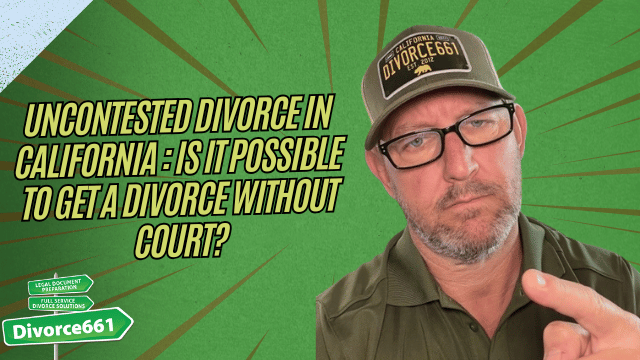Divorce 661 Santa Clarita Divorce Paralegal Process: Simplifying Your Amicable Divorce
Going through a divorce is already a challenging and confusing time. The last thing you need is to be overwhelmed by complicated paperwork, legal jargon, and endless court visits. Fortunately, Divorce 661, led by Tim Blankenship, offers a streamlined, affordable, and hassle-free solution for amicable divorces in California. This article breaks down how Divorce 661 can save you time, money, and stress by handling the entire divorce process efficiently on your behalf.
The Challenges of Navigating Divorce on Your Own
Divorce is never easy, but the process itself can add unnecessary frustration. Courts provide little guidance, and the sheer volume of forms filled with complex legal language can quickly become overwhelming. Attempting a do-it-yourself divorce often leads to mistakes, delays, and repeated trips to court. On the other hand, hiring an attorney may be costly and slow, leaving you stuck in a lengthy process that drags on for months.
Introducing Divorce 661: Your Affordable and Fast Divorce Solution
Since 2012, Divorce 661 has helped thousands of clients in California avoid the common pitfalls of divorce paperwork and court procedures. Specializing exclusively in amicable divorces, Divorce 661 offers a full-service legal document preparation process that is designed to be completed in days rather than months.
Here’s what sets Divorce 661 apart:
- Affordable: Unlike traditional legal fees, Divorce 661 provides a cost-effective alternative to hiring an attorney.
- Fast: The process is streamlined and efficient, allowing for rapid completion without unnecessary delays.
- Hassle-Free: You never have to go to court or miss work. Divorce 661 handles all court communications and paperwork on your behalf.
- California-Wide Service: Whether you’re in Santa Clarita or anywhere else in California, Divorce 661 is ready to assist.
How Divorce 661 Works
Divorce 661’s process is designed to minimize your involvement in the legal complexities while keeping you informed every step of the way. You work directly with their expert team, who prepares and files all necessary documents with the courts. This means you avoid the confusion of navigating the court system alone and the time lost attending hearings.
Because Divorce 661 focuses solely on amicable divorces, the service is ideal for couples who can agree on terms and want a straightforward resolution without conflict or drawn-out battles.
Benefits of Using Divorce 661
- Save Time: The process is completed within days, not months.
- Save Money: More affordable than attorney fees, making divorce accessible.
- Avoid Court: No need to appear in court or navigate confusing legal procedures on your own.
- Peace of Mind: Professional handling reduces stress and uncertainty.
Schedule Your Free Consultation Today
If you’re facing divorce in California and want a quick, easy, and affordable solution, Divorce 661 is here to help. Schedule a no-obligation 15-minute consultation to discuss your situation and learn how Divorce 661 can take the burden off your shoulders.
Visit divorce661.com to get started and take the first step toward a hassle-free divorce.
Conclusion
Divorce doesn’t have to be a long, expensive, and stressful ordeal. With Divorce 661, you can navigate the process quickly and affordably, without the headache of court appearances or confusing paperwork. Specializing in amicable divorces across California, Divorce 661 offers a trusted paralegal service that puts you first, saving you time, money, and stress.
Let Divorce 661 handle your divorce from start to finish—so you can focus on moving forward with your life.










